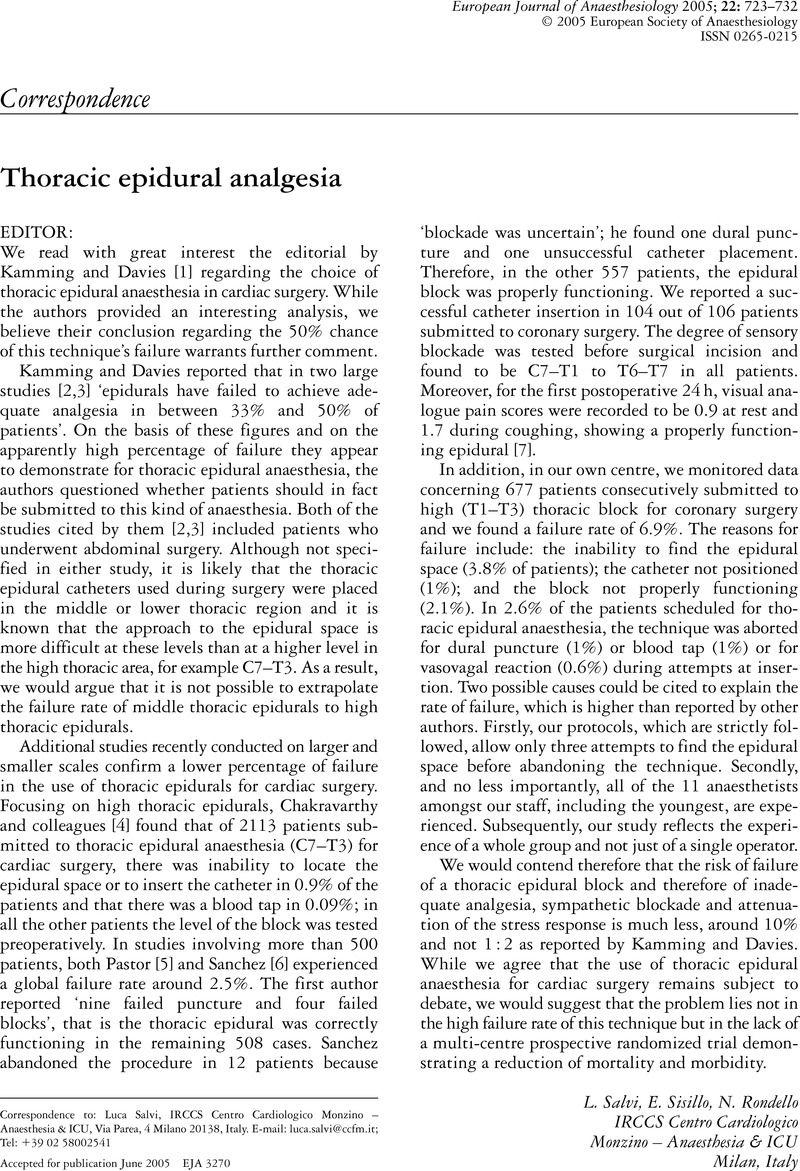No CrossRef data available.
Article contents
Anaesthetic management of upper oesophageal coins in children
Published online by Cambridge University Press: 26 August 2005
Abstract
An abstract is not available for this content so a preview has been provided. Please use the Get access link above for information on how to access this content.

- Type
- Correspondence
- Information
- Copyright
- © 2005 European Society of Anaesthesiology
References
Mahafza T, Batieha A, Suboh M, Khrais T. Esophageal foreign bodies: a Jordanian experience. Int J Pediatr Otorhinolaryngol 2002; 64: 225–227.Google Scholar
Uba AF, Sowande AO, Amusa YB et al. Management of oesophageal foreign bodies in children. East Afr Med J 2002; 79: 334–338.Google Scholar
Lin MT, Yeung CY, Lee HC, Sheu JC, Wang NL, Lee KS. Management of foreign body ingestion in children: experience with 42 cases. Acta Paediatr Taiwan 2003; 44: 269–273.Google Scholar
Sittitrai P, Pattarasakulchai T, Tapatiwong H. Esophageal foreign bodies. J Med Assoc Thai 2000; 83: 1514–1518.Google Scholar
Soprano JV, Fleisher GR, Mandl KD. The spontaneous passage of esophageal coins in children. Arch Pediatr Adolesc Med 1999; 153: 1073–1076.Google Scholar
Kanagalingam J, Georgalas C, Zainal A, Mochloulis G. Swimmer's view: a diagnostic adjunct for oesophageal foreign bodies. J R Coll Surg Edinb 2002; 47: 641–642.Google Scholar
Amin MR, Buchinsky FJ, Gaughan JP, Szeremeta W. Predicting outcome in pediatric coin ingestion. Int J Pediatr Otorhinolaryngol 2001; 59: 201–206.Google Scholar
Arana A, Hauser B, Hachimi-Idrissi S, Vandenplas Y. Management of ingested foreign bodies in childhood and review of the literature. Eur J Pediatr 2001; 160: 468–472.Google Scholar
Schunk JE, Corneli H, Bolte R. Pediatric coin ingestions: a prospective study of coin location and symptoms. Am J Dis Child 1989; 143: 546–548.Google Scholar
Seo JK. Endoscopic management of gastrointestinal foreign bodies in children. Indian J Pediatr 1999; 66 (Suppl 1): S75–S80.Google Scholar
Sharieff GQ, Brousseau TJ, Bradshaw JA, Shad JA. Acute esophageal coin ingestions: is immediate removal necessary? Pediatr Radiol 2003; 33: 859–863.Google Scholar
Conners GP. A literature-based comparison of three methods of pediatric esophageal coin removal. Pediatr Emerg Care 1997; 13: 154–157.Google Scholar
Knight PJ. Hooking a chronically embedded esophageal coin. J Pediatr Surg 2004; 39: 135.Google Scholar
Berthold LD, Moritz JD, Sonksen S, Alzen G. Esophageal foreign bodies: removal of the new euro coins with a magnet tube. Rofo 2002; 174: 1096–1098.Google Scholar
Hostetler MA, Barnard JA. Removal of esophageal foreign bodies in the pediatric ED: is ketamine an option? Am J Emerg Med 2002; 20: 96–98.Google Scholar
Janik JE, Janik JS. Magill forceps extraction of upper esophageal coins. J Pediatr Surg 2003; 38: 227–229.Google Scholar
Abrao J et al. Unusual foreign body in the esophagus: a challenge for the anesthesiologist. Acta Anaesthesiol Scand 2003; 47: 1176–1177.Google Scholar
Scheidemantel J, Weis KH. [Esophagus perforation in children.] [In German] Anasth Intensivther Notfallmed 1983; 18: 272.Google Scholar




